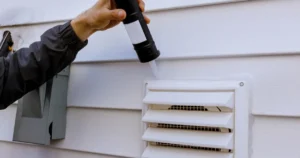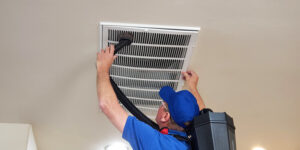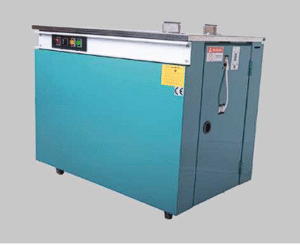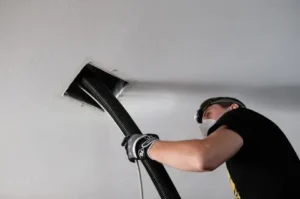
In the ever-evolving world of remote-controlled (RC) hobbies, choosing the right battery can be the difference between a mediocre experience and an electrifying performance. Among the wide array of battery options available, 3S LiPo batteries have emerged as the go-to choice for both seasoned RC enthusiasts and ambitious beginners. But what makes them so special?
From RC cars tearing up dirt tracks, to FPV drones zipping through aerial obstacle courses, the 3S LiPo battery has become synonymous with balanced power, efficiency, and reliability. In this article, we’ll uncover why 3S LiPo batteries have carved out a loyal following, what makes them superior to their counterparts, and how you can get the most out of them.
Understanding LiPo Batteries and the “3S” Configuration
What is a LiPo Battery?
LiPo stands for Lithium Polymer, a type of rechargeable battery known for its high energy density, lightweight structure, and impressive discharge rates. Unlike NiMH or older battery types, LiPo batteries can store more power in a smaller package—making them ideal for performance-based applications like RC racing and aerial drones.
What Does “3S” Mean?
The “3S” designation refers to a battery made up of three cells in series. Each cell typically has a nominal voltage of 3.7V, giving a 3S pack a total of 11.1V nominal and 12.6V when fully charged. This voltage range provides an excellent balance of torque, speed, and control, which is crucial in competitive and recreational RC settings.
Why 3S LiPo Batteries Stand Out
Ideal Power-to-Weight Ratio
One of the main reasons for the popularity of best 3S LiPo batteries is their power-to-weight ratio. At 11.1V, they provide noticeably more punch than a 2S (7.4V) pack without the extra bulk of a 4S or 6S battery. This means faster acceleration and top speed without compromising handling due to excess weight.
Mid-Tier Sweet Spot for Hobbyists
For most RC hobbyists, 3S batteries hit the perfect sweet spot. They are powerful enough to satisfy advanced users, yet not too overwhelming for those transitioning from beginner setups. Whether you’re upgrading from a 2S pack or starting fresh with something reliable, 3S offers solid middle-ground performance.
Cost-Efficient Performance
3S batteries are often more affordable than their 4S or 6S counterparts, both in terms of the battery itself and compatible electronics. They allow users to enjoy higher performance without needing to overhaul their entire RC system. ESCs, motors, and chargers that work with 3S setups are widely available and reasonably priced.
Applications of 3S LiPo Batteries in the RC World
🚗 In RC Cars
For 1/10 scale RC cars, 3S batteries are a game-changer. They provide faster acceleration, longer wheelies, and stronger torque for off-road bashing. They’re commonly used in brushless setups and provide enough voltage to push 60+ mph with the right gearing.
✈️ In RC Planes
Fixed-wing aircraft benefit from the lightweight and high voltage of a 3S battery. Planes can stay airborne longer, maintain smoother throttle response, and handle tricks and loops with ease. The balance between capacity and power is especially helpful in aerobatic or sport-flying models.
🛸 In FPV Racing Drones
For drone racing, 3S batteries offer quick responsiveness and stable power delivery, making them perfect for freestyle or beginner racing classes. While 4S and 6S are standard in pro-level racing, many pilots start with 3S due to its manageable performance.
3S vs 2S vs 4S: A Quick Comparison
| Feature | 2S (7.4V) | 3S (11.1V) | 4S (14.8V) |
|---|---|---|---|
| Voltage | Low | Medium | High |
| Weight | Light | Medium | Heavier |
| Speed | Moderate | High | Very High |
| Control | Smooth | Balanced | Aggressive |
| Cost | Cheapest | Moderate | Expensive |
| Suitable For | Beginners | Intermediate | Advanced |
Things to Consider Before Using a 3S LiPo
🔌 Compatibility
Before jumping into the 3S world, check your motor, ESC (Electronic Speed Controller), and receiver specs. Not all RC vehicles are designed to handle 11.1V. Using an incompatible battery can cause overheating or permanent damage.
Safety First
LiPo batteries require proper handling to avoid fires or explosions. Always use a LiPo-safe charging bag, avoid overcharging, and never puncture or over-discharge a cell. A good balance charger with cell monitoring is essential.
Maintenance Tips
-
Balance Charge Regularly to maintain cell health
-
Store at 3.8V per cell when not in use
-
Avoid using the battery when it’s puffy or damaged
-
Clean connectors and inspect wires for wear
Expert Tips to Maximize Your 3S LiPo Performance
-
Choose the Right C-Rating
A 25C–35C battery is ideal for most hobbyists. Higher C-ratings give more burst power but can reduce longevity. -
Match Capacity to Your Setup
A 2200mAh 3S battery is popular for drones, while 5000mAh is better for RC trucks or buggies for extended runs. -
Monitor Temperatures
Batteries that get too hot can degrade quickly. Let them cool between runs and avoid running until fully depleted. -
Use Telemetry or Voltage Alarms
These tools help prevent over-discharge and damage to your battery.
Conclusion: Why 3S LiPo Batteries Win the Race
3S LiPo batteries strike a perfect balance between power, weight, and affordability, making them a top pick for RC enthusiasts of all levels. Whether you’re flying drones, piloting planes, or racing trucks, 3S delivers reliable and exciting performance without requiring extensive modifications or advanced skills.
From their wide compatibility to their cost-effectiveness and sheer punch, it’s no wonder these batteries are such a staple in the RC world. If you’re looking to upgrade your experience or step into the next level of performance, 3S is your gateway to adrenaline-filled adventures.
Frequently Asked Questions (FAQs)
Q1: Can I use a 3S LiPo in a 2S-compatible RC car?
A: No. Using a 3S battery in a setup meant for 2S can cause overheating and damage to your motor or ESC. Always verify your equipment supports 3S voltage.
Q2: How do I safely charge a 3S LiPo battery?
A: Use a LiPo balance charger and set it to the correct cell count (3S = 11.1V). Always charge in a fire-safe location and never leave the battery unattended.
Q3: What is a good C-rating for a 3S LiPo?
A: For general use, a 25C–35C battery is sufficient. Higher C-ratings (45C and above) are better for racing or heavy-duty performance but may reduce battery life.
Q4: What’s the best capacity (mAh) for a 3S battery?
A: It depends on your RC model. 2200mAh–3000mAh works well for drones and light vehicles, while 4000mAh–6000mAh is suitable for larger cars or planes.
Q5: How do I know when to replace my 3S LiPo battery?
A: If the battery becomes puffy, struggles to hold a charge, or gets hot during use, it’s time to replace it. Also, if any cell consistently reads low voltage, the battery is no longer safe to use.






